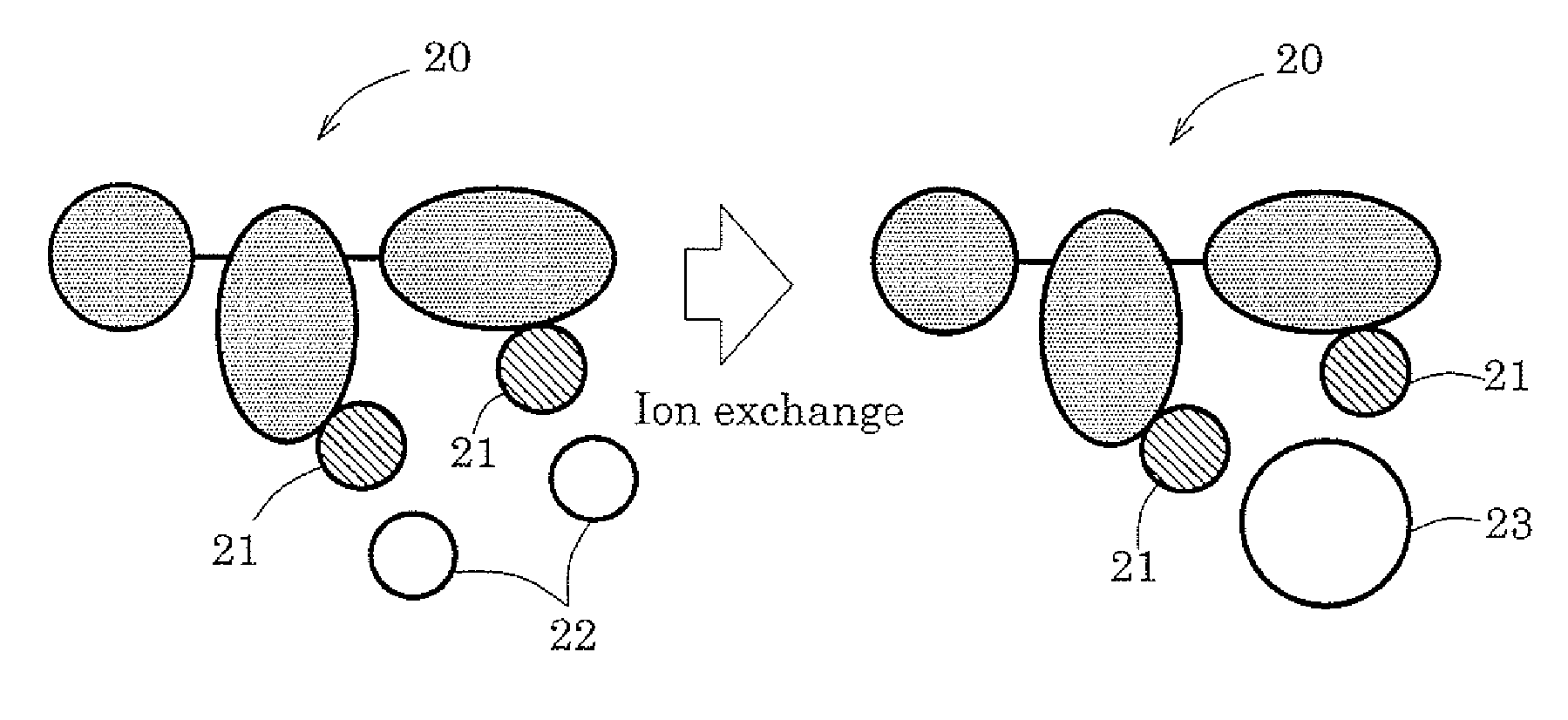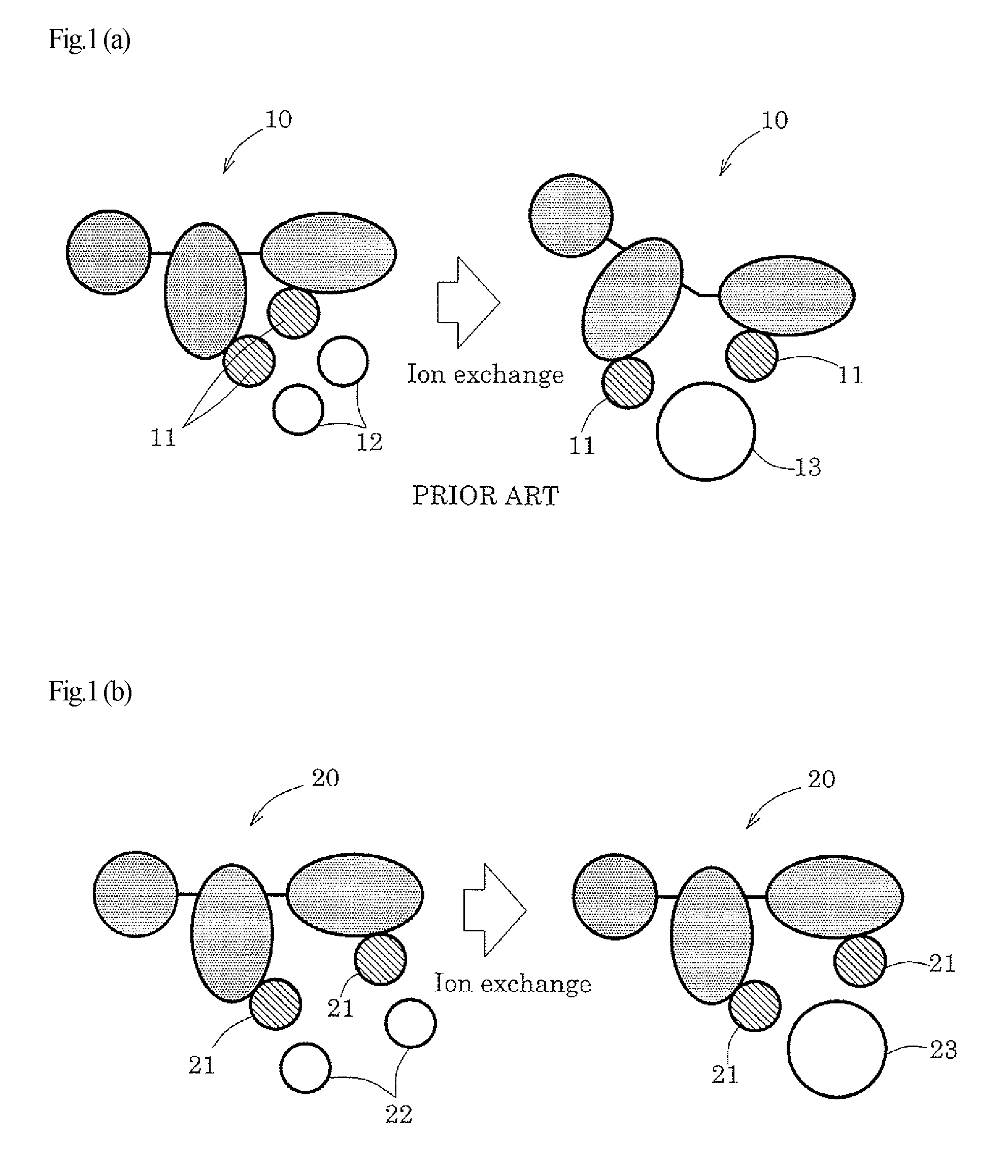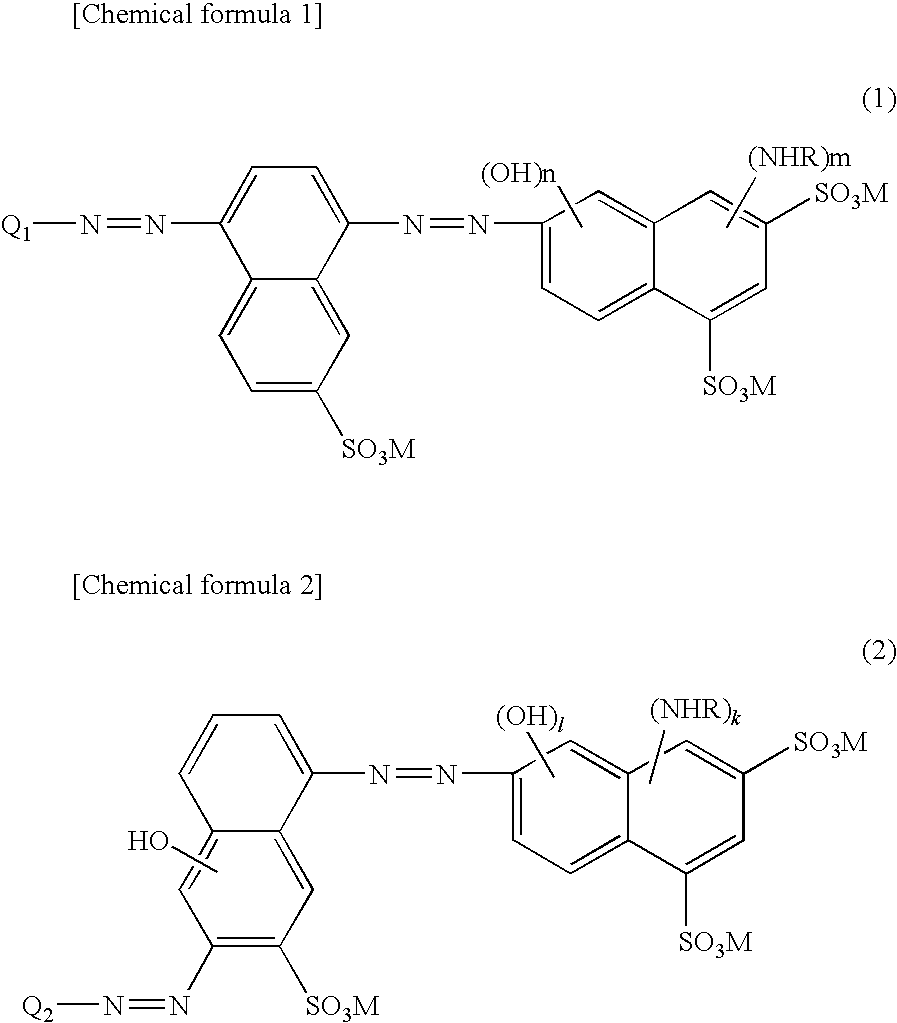Process for producing water-resistant polarizing film
a technology of polarizing film and water resistance, which is applied in the direction of polarizing elements, spectral modifiers, electromagnetic radiation sensing, etc., can solve the problems of poor heat resistance and light resistance of polarizing plate, poor water resistance of polarizing film, and considerable thickness of polarizing pla
- Summary
- Abstract
- Description
- Claims
- Application Information
AI Technical Summary
Benefits of technology
Problems solved by technology
Method used
Image
Examples
example 1
[0044]In accordance with a conventional method (“Riron Seizo Senryo Kagaku” Fifth Edition (Theoretical production Dye Chemistry), Yutaka Hosoda (published on Jul. 15, 1968, GIHODO SHUPPAN Co., Ltd.), pages 135 to 152), a monoazo compound was produced by diazotizing and coupling 4-nitroaniline and 8-amino-2-naphthalene sulfonic acid. The obtained monoazo compound was diazotized by a conventional method in the same manner and was further subject to diazotization and coupling reaction with 1-amino-8-naphthol-2,4-disulfonate lithium salt to obtain a rough product including an azo compound having the following structural formula (6) and salting out was carried out with lithium chloride to obtain an azo compound having the following structural formula (6):
[0045]The azo compound of the aforementioned structural formula (6) was dissolved in ion-exchange water to prepare a coating solution having an azo compound concentration of 20% by weight. The coating solution was obtained with a polyeth...
example 2
[0048]An azo compound of the following structural formula (7) was obtained in the same manner as in Example 1 except for changing 4-nitroaniline to p-anisidine.
[0049]The azo compound of the aforementioned structural formula (7) was dissolved in ion-exchange water to prepare a coating solution with a concentration of the azo compound of 20% by weight. The coating solution was obtained with a polyethylene dropper and was sandwiched by two pieces of slide glasses. A nematic liquid crystal phase was observed when observing with a polarization microscope at room temperature (23° C.).
[0050]The aforementioned coating solution was used to prepare a laminate composed of a polarizing film and a water-resistant polarizing film in the same manner as in Example 1. Table 1 shows optical characteristics of the obtained laminate having a water-resistant polarizing film.
example 3
[0051]An azo compound of the following structural formula (8) was obtained in the same manner as in Example 1 except for changing 4-nitroaniline to p-toluidine.
[0052]The azo compound of the aforementioned structural formula (8) was dissolved in ion-exchange water to prepare a coating solution with a concentration of the azo compound of 20% by weight. The coating solution was obtained with a polyethylene dropper and was sandwiched by two pieces of slide glasses. A nematic liquid crystal phase was observed when observing with a polarization microscope at room temperature (23° C.).
[0053]The aforementioned coating solution was used to prepare a laminate composed of a polarizing film and a water-resistant polarizing film in the same manner as in Example 1. Table 1 shows optical characteristics of the obtained laminate having a water-resistant polarizing film.
PUM
| Property | Measurement | Unit |
|---|---|---|
| ionic radius | aaaaa | aaaaa |
| liquid temperature | aaaaa | aaaaa |
| temperature | aaaaa | aaaaa |
Abstract
Description
Claims
Application Information
 Login to View More
Login to View More - R&D
- Intellectual Property
- Life Sciences
- Materials
- Tech Scout
- Unparalleled Data Quality
- Higher Quality Content
- 60% Fewer Hallucinations
Browse by: Latest US Patents, China's latest patents, Technical Efficacy Thesaurus, Application Domain, Technology Topic, Popular Technical Reports.
© 2025 PatSnap. All rights reserved.Legal|Privacy policy|Modern Slavery Act Transparency Statement|Sitemap|About US| Contact US: help@patsnap.com



